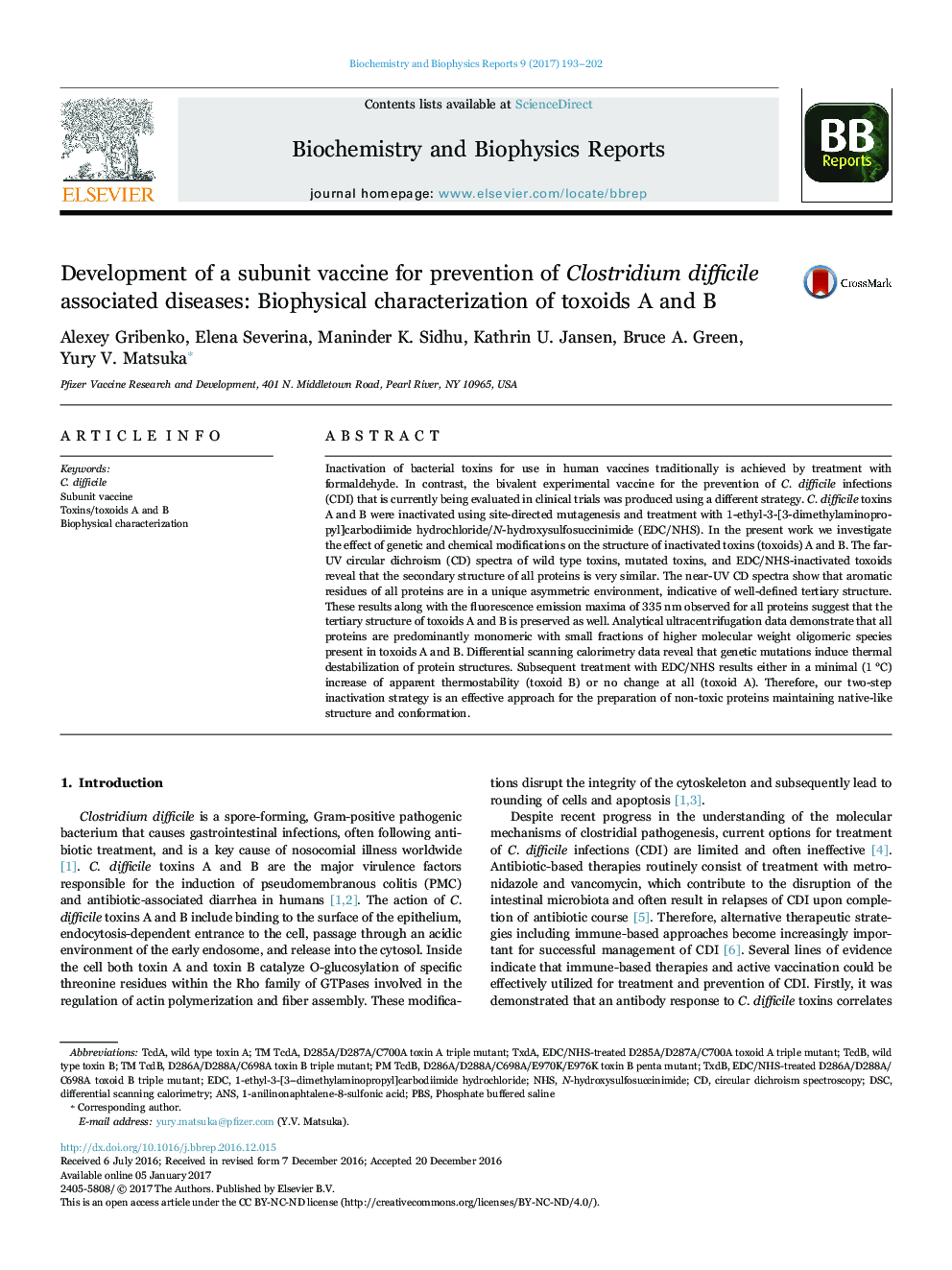| Article ID | Journal | Published Year | Pages | File Type |
|---|---|---|---|---|
| 5507095 | Biochemistry and Biophysics Reports | 2017 | 10 Pages |
â¢Performed biophysical characterization of C. difficile toxins and toxoids A/B.â¢Genetic and EDC/NHS modifications do not disrupt the protein's structure.â¢Inactivated toxins (toxoids) are predominantly monomeric molecules.â¢Toxin inactivation has no effect on the structural plasticity of the proteins.â¢Genetic and EDC/NHS modifications represent a novel toxin inactivation approach.
Inactivation of bacterial toxins for use in human vaccines traditionally is achieved by treatment with formaldehyde. In contrast, the bivalent experimental vaccine for the prevention of C. difficile infections (CDI) that is currently being evaluated in clinical trials was produced using a different strategy. C. difficile toxins A and B were inactivated using site-directed mutagenesis and treatment with 1-ethyl-3-[3-dimethylaminopropyl]carbodiimide hydrochloride/N-hydroxysulfosuccinimide (EDC/NHS). In the present work we investigate the effect of genetic and chemical modifications on the structure of inactivated toxins (toxoids) A and B. The far-UV circular dichroism (CD) spectra of wild type toxins, mutated toxins, and EDC/NHS-inactivated toxoids reveal that the secondary structure of all proteins is very similar. The near-UV CD spectra show that aromatic residues of all proteins are in a unique asymmetric environment, indicative of well-defined tertiary structure. These results along with the fluorescence emission maxima of 335 nm observed for all proteins suggest that the tertiary structure of toxoids A and B is preserved as well. Analytical ultracentrifugation data demonstrate that all proteins are predominantly monomeric with small fractions of higher molecular weight oligomeric species present in toxoids A and B. Differential scanning calorimetry data reveal that genetic mutations induce thermal destabilization of protein structures. Subsequent treatment with EDC/NHS results either in a minimal (1 °C) increase of apparent thermostability (toxoid B) or no change at all (toxoid A). Therefore, our two-step inactivation strategy is an effective approach for the preparation of non-toxic proteins maintaining native-like structure and conformation.
